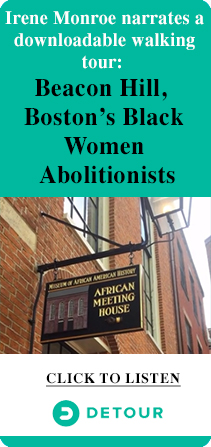Aging is more than a biological process; it is also a spiritual walk through life.
The walk can be a difficult one thanks, in part, to a culture that venerates youth. This idolization of the young can make aging seem shameful and devalued, which can lead to the isolation of many heterosexual and LGBTQ seniors.
For LGBTQ elders the aging journey can be even more stressful. Our journey is populated with justified fears of homophobic biases—especially in areas of housing and healthcare.
For example, LGBTQ seniors residing in states that do not have laws banning housing discrimination—meaning, senior centers, assisted-living facilities, nursing homes, retirement communities and low-income residences—can be excluded because of their gender identity or sexual orientation. Homelessness can become a reality for them.
Those of our elders who reside in non-friendly LGBTQ residences have “increasingly report that they have been disrespected, shunned or mistreated in ways that range from hurtful to deadly, even leading some to commit suicide.” By 2050 the number of LGBTQ’s over the age of 65 will more than double in size to approximately 3 million. By 2050 LGBTQ African Americans, Latino, Asian and Pacific Islanders, Native American and Alaska Natives will comprise a large part of that population.
As our LGBTQ population age and grow more and solutions gradually emerge— building LGBTQ-friendly senior residences and centers, and educating health care workers on the community’s specific physical, emotional, social and geriatric needs, to name just a few.
One local solution is the LGBT Aging Project, founded in Boston in 2001. The Project “provides cultural competence and institutional capacity training to elder service providers on how to create and sustain LGBT welcoming environments, develop community-building programs for LGBT older adults and caregivers, and also works to enact policy and legislative changes to improve access to care and benefits for LGBT elders.”
However, the fault lines of race and class, and cultural sensitivity LGBTQ communities of color confronted in their youth sadly continues to follow them in their senior years.
This demographic group within the LGBTQ community is not only isolated from their family and faith communities, but also isolated from mainstream society and the larger LGBTQ community. And they are the largest demographic group to be disproportionately still impacted by HIV/AIDS.
For example, CDC believes that in 2015 fifty percent of the people with HIV will be over 50, (Massachusetts already have over 45 percent), but there are many cases of African Americans over the age of 50 being newly infected. And for older African-Americans living with HIV studies have revealed that this patient population find chronic illnesses more difficult to self-manage. And those managing their HIV with co-morbidities such as arthritis, cancer, depression, diabetes, heart disease, hepatitis, high blood pressure and tuberculosis have a Herculean task not only staying on their meds but also stayingconnected to community.
This is a particularly vulnerable population in terms of housing and healthcare. LGBTQ elders of color are finding it difficult to access the life-sustaining services entitled to them by the elder service providers in their state.
Another significant challenge with this population is the lack of data that has been gathered on aging in LGBTQ communities of color, underscoring the importance for local initiatives to take hold across the country.
Boston’s Healthy Aging Series for LGBT Elders of Color is a local initiativeaiming to fill in the gap. It operates out ofThe Fenway Institute and headed by Bob Linscott,Assistant Director of the LGBT Aging Project.
Since Healthy Aging Series for LGBT Elders of Color first revved up in 2013 it has provided fun, food and fellowship while providing important resources for healthcare and aging services. Dec. 7th event was a southern home-style gospel brunch, paired with informational packets anddoor gifts held at Cambridge Senior Center. There was a panel discussion on the topic of “Healthy Aging for LGBT Older Adults,”addressing several areas of healthy aging such as: sexual health that Lenny Alberts, director of Medical Education at the New England Association on HIV over 50 presented; mental health that William Alexander, clinical psychologist focused in on; and spiritual health that I talk about.
Linscott works indefatigably in creating these panels in order to increase both national and local awareness of the concerns LGBT elders of color confront and the issues that impact our lives.He has conducted cultural competency training within the larger LGBTQ community and with mainstream elder care providers.
Linscott knows that concerns and challenges will continue to arise on how to best address the ways in which multiple minority statuses and oppressions affect LGBTQ elders of color, and how to create a safe and supportive community for us in which we no longer feel isolated, overwhelmed and uninformed out of fear of homophobic discrimination resulting from our age, racial identities, sexual orientations and gender identities.
The gathering on Dec. 7th was small and delightfully intimate.
And I believe with more and more LGBTQ elders of color gatherings my walk toward aging won’t be as difficult.



